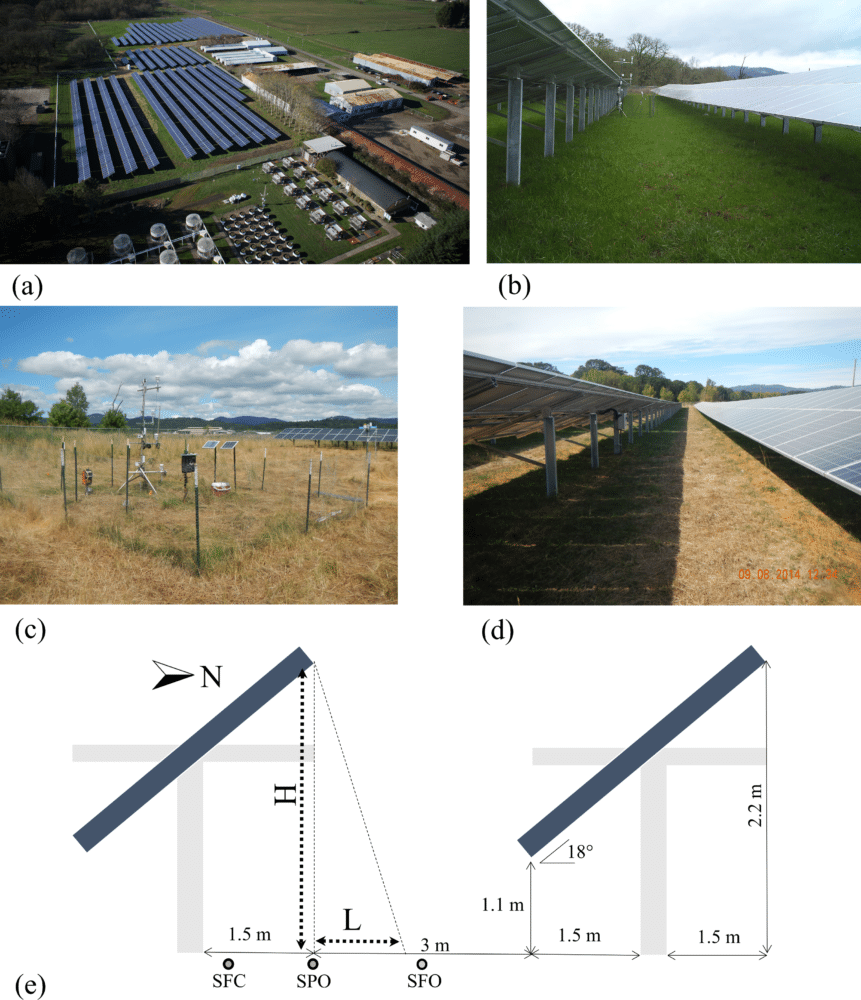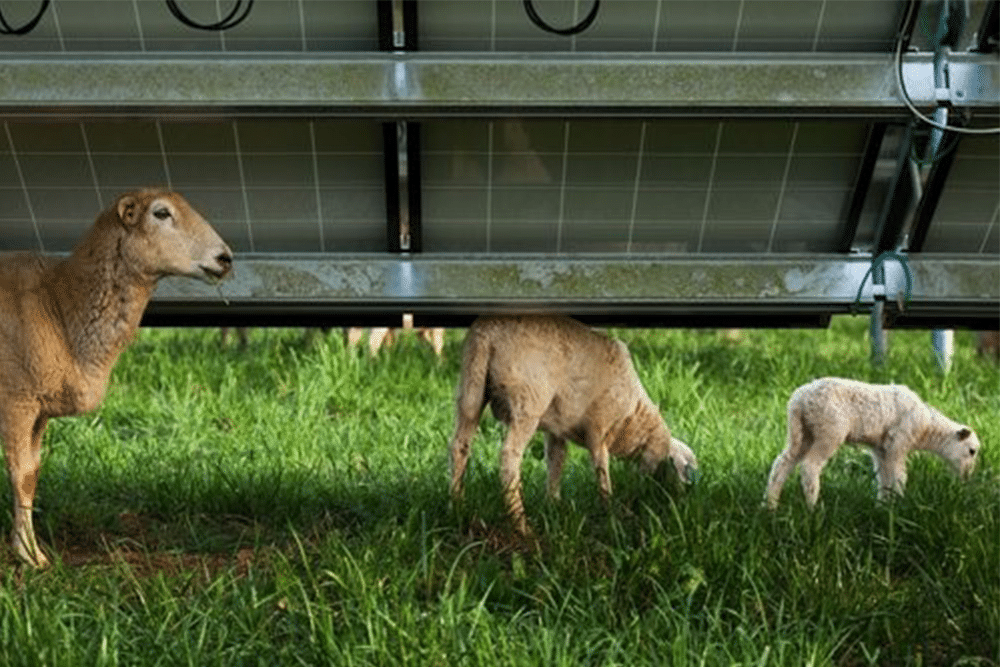It’s all about the benjamins – and it seems solar power is getting better at printing them a little more every single day.
Researchers at the Oregon State’s College of Agricultural Sciences, in the recently published Remarkable agrivoltaic influence on soil moisture, micrometeorology and water-use efficiency (.pdf), measured the effects on growth of multiple plants located under solar modules. The analysis found that several key grazing grasses were able to significantly increase their output, and in total the researchers found that greater than 90% more biomass was grown in areas partially or fully covered by solar panels. The paper suggests it was mostly due to significantly increased water efficiency – 328%. This efficiency allows semi-arid regions, with a wet winter, to store more water in the ground, allowing for a longer growth during the growing season.

The researchers discovered the aberration in growth as they walked by the facility on a daily basis, and decided to follow up with a proper analysis. The paper notes:
This solar array was installed without the intent to influence plant production. It was by accident. Nobody engineered this system. Now, we’re trying to develop a deeper understanding of how we can engineer the system to be technically feasible, environmentally sound and economically viable.

Dr. Elnaz Hassapour Adeh, the lead researcher on the paper noted that there is further research planned on key high value crops that are suitable in shady conditions. She said that this study is part of a larger “effort to understand links among energy, water and food systems”.

Significant research is being done on how to increase revenue strategically from solar power systems, and much like wind power, the ability to site solar power in ways that fossils simply cannot do is part of the magic. Onyx Solar is already replacement glass in buildings with solar modules, RGS Energy and Tesla are trying to replace shingles with solar modules, the Dutch are testing solar powered highway noise barriers, the Chinese, Dutch, French, and others are all testing solar roadways, and many are trying ways to integrate solar with food production – including in Massachusetts cranberry bogs, Chinese fish farms and vineyards, Japanese mushroom farms, Minnesota honey production and more.
This content is protected by copyright and may not be reused. If you want to cooperate with us and would like to reuse some of our content, please contact: editors@pv-magazine.com.









I have always noticed grass grows more lush in the shade or partial shade of fences so it does not surprise me about solar panels casting shadows causing more feed for sheep. Question is should the fixed angle maximizing the shadow year round be based on the spring and fall equinox instead of the winter and summer soltice to grow the most grass in share and pull maximum energy from the solar panels? Another interesting thing I noticed was that clustered rooftop solar panels shade the rooftop causing air conditioning to be more effective and efficient even if the solar panels fail to work as intended.
http://jacobsschool.ucsd.edu/news/news_releases/release.sfe?id=1094
North sides of trees and pastures always grow moss – cooler, moister – this is a good thing for water retention and pollination….
Was the effect on grazing behaviour measured? Did sheep tend to graze more in the shade of the panels? Maybe there is an additional effect of grazing contribution to the growth
Free range sheep should be required as part of large array solar installation.
As long as they have a place to go when their grazing benefit is finished. Let’s not overgraze these areas.
How are PV panel wires and connections protected from grazing livestock? My experience shows they’ll chew through just about anything at one point or another.
Are sheep ITC eligible ?
That is a good question. Are Sheep ITC eligible? Do they meet the Physical Work Test ? anyone ?
Not exactly sure, so I’d confirm with others – but – if you pay for it up front, ITC eligible. If you pay as O&M – no.
There may be a USDA program that helps mitigate costs here for both….
Shows the importance of ground cover, weather in form of solar panels or dead plant material
Interesting to hear that and hope we extends that service down here
Now if we could figure out a cost effective way to keep cattle from wrecking the arrays, I’d add even more to my cattle farm.
heavy on the marketing copy by Shell Oil for purposes of PR, but…
[vimeo 343472549 w=640 h=360]
I love the study as it brings more awareness to the public. its’ also beautiful to count on the benefits of solar power arrays, especially on our food chain. More than the shading effect I suggest that the researchers consider the type of modules and the material make up with respect to absorbent of solar radiation. could be that in this situation the array is absorbing the ambient radiation that may have been reaching the grass and deterring it’s growth. There are lot of benefits associated with solar energy that we are yet to know.
I don’t believe it. If you get 200 MW from an array of 20% efficient PV panels, they heat the air around them with the other 800 MW. Trees do a better job, mainly because transpiration is as good a way of cooling a field, as perspiration is of cooling a human. The heat removed goes to the tops of the clouds, bypassing kilometres worth of greenhouse gases.
But besides that, you’d better have as much backup GAS turbine power spinning but not yet being used, as whatever drop in power your PV panels will suffer from the occasional cloud.